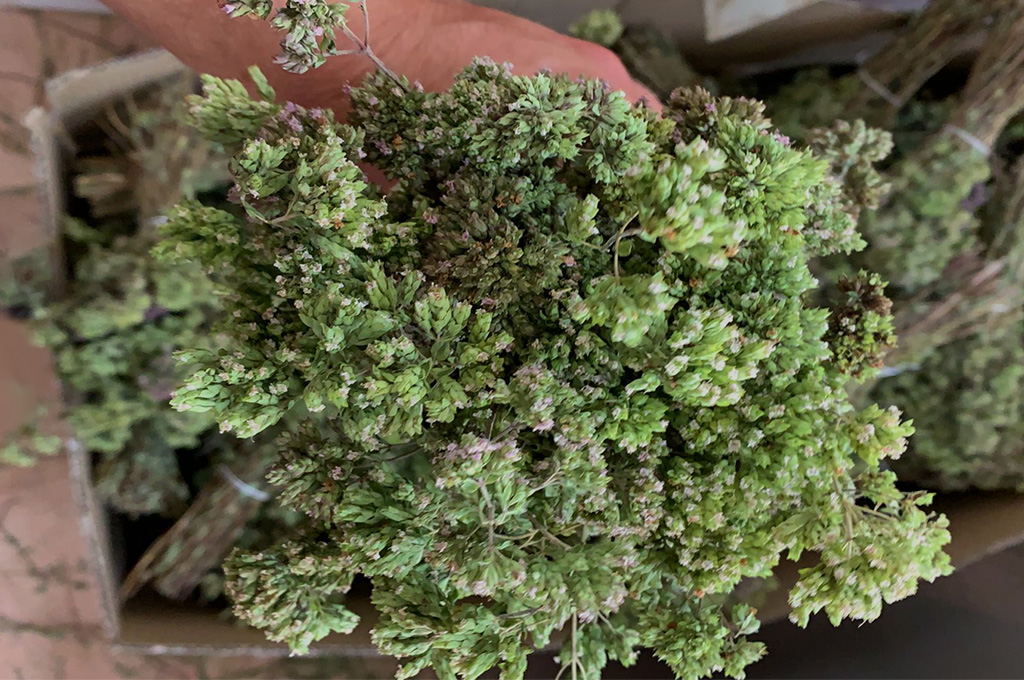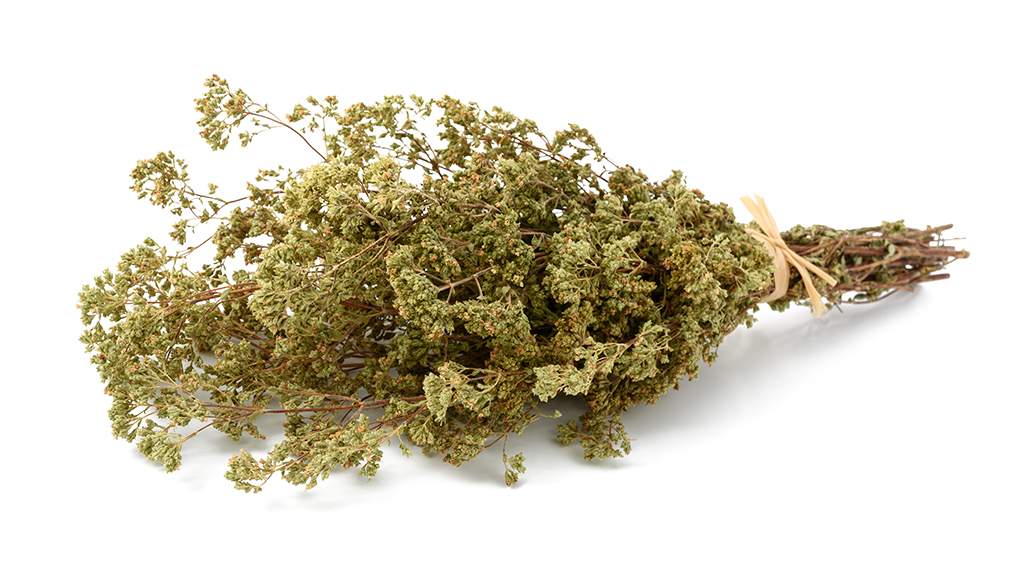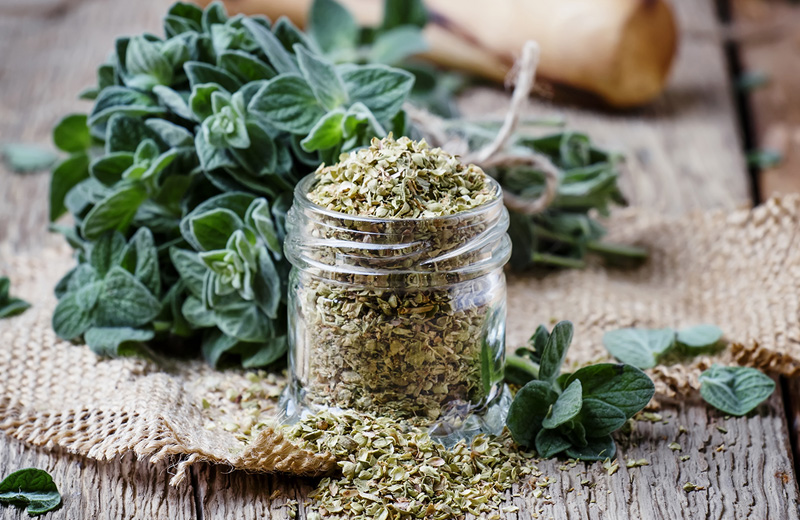Pollino National Park and its oregano
Let’s learn more this aromatic herb, symbol of the Mediterranean diet, that grows in an outstanding wild natural environment.
Oregano is an aromatic herb, nevertheless a classic Mediterranean ingredient. Its pungent taste immediately reminds the Mediterranean flairs and leads you to think back to summer memories from childhood, picnics on the beach and barbecues with family and friends.
A Bruschetta with a swirl of oil and sprinkle of oregano, tomato and mozzarella salad, pizza, grilled seafood in the hot summer evenings..what does oregano remind you of?
ID: oregano
How does oregano look like before reaching our plates?
Oregano is a bushy woody-branched perennial herb, it grows to 80 cm tall. Its leaves are tiny and finely haired; oregano blooms between July and October with little purplish-pink flowers.
It grows spontaneously in sunny regions, at high altitude (2000 meters), as well as in rocky soils. It is also grown as it is extremely versatile for cooking, not to mention health benefits it can provide.
Oregano, whose the scientific name is Origanum Vulgare, belongs to Lamiaceae family that includes mint, rosemary, lavender, thyme, sage, lemon bam and marjoram
Marjoram and oregano are often confused for one another as they look very similar, however their distinctive smell and flavour set them apart.
Unlike aromatic herbs, such as parsley, thyme and basil, dried oregano fully preserves its aroma that gets even more intense thanks to the essential oils contained in its flowers and leaves.
To dry oregano, you need to cut the stems, bundle them together, hang them upside down and store them in a dark and ventilated location. Once they are fully dried, you crush flowers and leaves, put them into a jar, making sure it is hermetically sealed.

Did you know that…
The etymology of the word “oregano” reveals its ancient and mediterranean origins: it derives from the Greek word oros (mountain) and gamos (joy), hence it means “joy of the mountain”.
Oregano Di Carlo does grow in the mountains of the Pollino National Park, a wild and unspoiled area.
Dried Oregano Di Carlo is handpicked between June and August, arranged in bunches that are let to dry in ventilated locations, without adding additives or preservatives.
Now let’s discover the uncontaminated area where our oregano grows.
Don’t miss this park out!
Pollino National Park is a vast protected mountainous area, covering 192.000 hectares straddling between Basilicata and Calabria. Bordered by two seas, Tyrrhenian and Ionian Sea, the area is encompassed by the Pollino and Orsomarso Massifs where peaks are 2.200 meters tall.
Pollino National Park is a great example biodiversity as numerous animal and plant (especially medicinal plants) species coexist, not to mention its breathtaking scenery and landscapes: rivers, valleys, mountains covered with snow all year long (the highest peak is Serra Dolcedorme that is 2267 meters tall).
This is the perfect place to enjoy nature, as well as outdoor sports, such as trekking, rafting, hiking, mountain biking and horseback riding
Did you know that…
The Pollino National Park is the largest protected area in Italy and is UNESCO world heritage site. The logo shows the Loricato pine that is considered as a threatened species.
Discover here all the activities you can enjoy in the park.
If you are not lucky enough to have the opportunity to handpick your oregano, you can simply purchase it in our online store.
Why should I get oregano?
In few words, it is great for cooking and also known for its aromatic properties and uses, and much more…
Oregano: good for your health
The key compounds in oregano are phenolic (thymol and carvacrol), minerals (calcium, magnesium, iron, potassium, zinc), and vitamins (A,B,C, D, E, K)
The essential oils get extracted from its leaves and flowers through the distillation; the aroma is pungent and spicy. Not only are the essential oils used for cooking, but also they find application in homeopathic medicine, cosmetic and pharmaceutical industries.
Besides its aromatic properties, oregano has multiple health benefits: it boosts your digestive system and it has painkilling and expectorant properties; moreover it is antifungal, a natural antibiotic, as well as a powerful antioxidant.
Infact, according to the circustances, it can be used in different ways
For example, it can be enjoyed as herbal tea to help with digestion:just boil some water, then add some dried flowers and leaves and let it stand for 15 minutes. Moreover the organo tea is known to soothe sore throats.
The oregano oil seems to be an effective remedy against cold and flu: just add few drops to hot water and inhale the steam.
Oregano, the culinary superstar: Italian tradition and versatility
Oregano is the herbal superstar in the kitchen: it is so versatile that can be used fresh or dry for different methods of cooking, not to mention it well pairs with vegetables, meat, fish, cheese, salads …
Oregano is a cooking staple in Mediterranean cuisine. On the bruschetta with tomato and olive oil, on pizza, organo is a key ingredient in culinary tradition from Basilicata, such as stale bread (pane raffermo): after being soaked in water, just add with oil, salt and oregano and then baked it in the oven; sarde arrangate (sardines and breadcrumbs cake) with pecorino cheese, oregano, chopped wild fennel, garlic, extra virgin olive oil, salt and pepper; gnummareddi, lamb or kid goat offals rolls.


